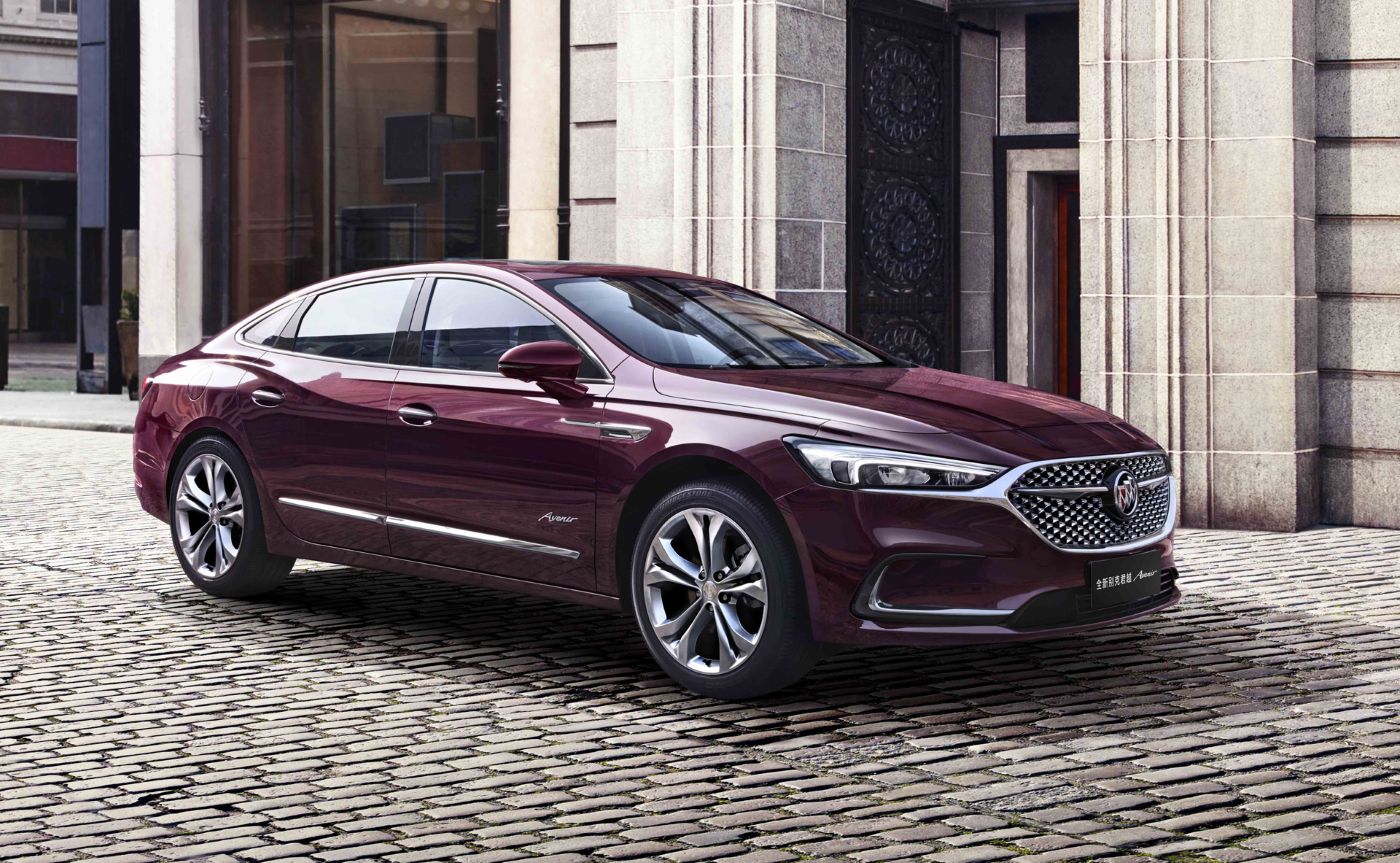When it comes to sedans, longevity is the ultimate benchmark. Some sedans clock hundreds of thousands of miles with ease, earning the loyalty of drivers who just want a car that works—year after year.
Others crash and burn before the first lease term is up, victims of poor quality, rushed engineering, or flat-out bad ideas. In a sea of mediocrity, here are five American-made or American-favored sedans that proved their worth—and five that just didn’t make the cut.
5 Sedans With Record-Setting Lifespans
In an age where cars often feel more disposable than durable, a select few sedans continue to defy the odds—and the odometers. These aren’t the flashy, trend-chasing models that dominate showroom floors for a year or two before disappearing. These are the quiet legends: the sedans that rack up mileage like frequent flyers, logging 200,000, 300,000, even 400,000 miles without blinking.
What makes a car truly long-lasting? It’s more than just solid engineering. It’s a combination of reliability, low-cost maintenance, drivetrain resilience, and old-school build quality that shrugs off the years. Whether you’re a commuter looking for a dependable ride or a used-car shopper chasing value, these sedans are proof that not every car is built to break down.
Here are five sedans with record-setting lifespans—vehicles that have earned their reputations the hard way, mile after mile.
1. Toyota Avalon
Yes, it’s Japanese, but the Toyota Avalon has long been built in Kentucky and tuned for American roads—so it earns its spot here. The Avalon is the epitome of a long-lasting full-size sedan.
Its V6 powertrain, bulletproof transmission, and plush-yet-practical cabin are all geared toward comfort and longevity. These cars routinely pass the 250,000-mile mark with minimal drama, making them a favorite among older buyers, fleet operators, and anyone who values peace of mind.
Toyota’s flagship sedan, the 2022 Avalon, presents a bold and aggressive exterior, but under the skin, it’s every bit the comfortable cruiser. Built on the same platform as the mid-size Camry, this full-size sedan offers a choice between a V-6 engine or a hybrid powertrain, all powering the front wheels.
Inside, the Avalon’s cabin is spacious and designed for long-haul comfort, striking a balance between modern amenities and user-friendly simplicity. It comes well-equipped with a full suite of driver-assistance features and infotainment tech that covers the essentials without becoming overbearing.
For drivers who still favor the comfort and familiarity of a large sedan over the elevated stance of an SUV, options are quickly disappearing—models like the Chrysler 300, Nissan Maxima, and Volkswagen Arteon are among the few that remain. And now, the Avalon joins the list of soon-to-be-gone nameplates, with 2022 marking its final model year.
Toyota hasn’t made major changes to the Avalon for 2022, but the biggest news is its departure. This is the final model year for the large sedan, with production scheduled to end in August 2022.
That means anyone hoping to claim a new Avalon has a limited window to do so. Among the updates for its last hurrah, Toyota has dropped the previously available all-wheel-drive system, and the sportier TRD trim has been discontinued as well.
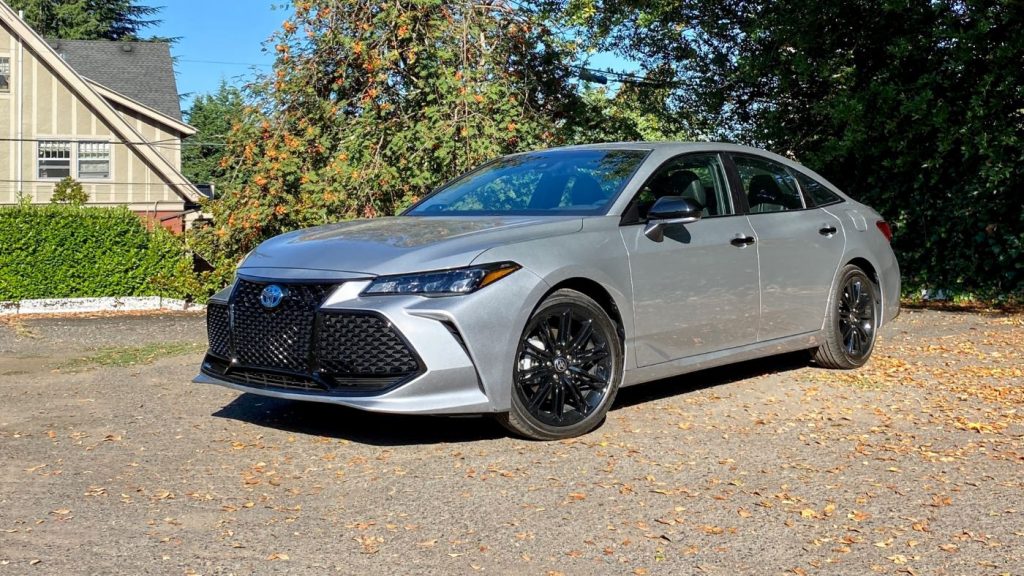
The Hybrid XSE is now offered exclusively with the Nightshade appearance package, and all 2022 models now feature a rear-seat reminder system. Additionally, the suite of driver-assistance technologies has been upgraded with improved camera and radar-based collision avoidance systems.
The 2022 Toyota Avalon starts at $37,920 and can reach up to $45,245 depending on the trim and equipment selected. The base XLE trim, priced at $37,920, offers solid value with features like LED headlights and heated, power-adjustable side mirrors.
Inside, you get dual-zone automatic climate control, heated front seats, an auto-dimming rearview mirror, and a tilt-and-telescoping steering column. Stepping up to the Hybrid XLE adds a more efficient powertrain at $38,945, while the Hybrid XSE Nightshade trim brings a stylish aesthetic at $42,295.
The Limited and Touring trims hover around the $44K mark, with the Hybrid Limited topping out at $45,245. All Avalon trims come equipped with Apple CarPlay, Android Auto, SiriusXM satellite radio, and safety features such as adaptive cruise control and blind-spot monitoring.
The Avalon lineup provides buyers with two distinct powertrain options. The conventional setup includes a 3.5-liter V-6 engine producing 301 horsepower and 267 lb-ft of torque, mated to an eight-speed automatic transmission driving the front wheels. In performance testing, the V-6-equipped Avalon accelerated from 0 to 60 mph in 6.0 seconds.
Hybrid trims feature a 2.5-liter four-cylinder engine paired with two electric motors, offering a combined output of 215 horsepower. This hybrid system uses a continuously variable automatic transmission (CVT) and is also front-wheel drive.
While performance enthusiasts may find it tame, the Avalon is clearly tuned with comfort in mind—something it delivers in spades. During road tests, the big sedan proved smooth and composed, soaking up road imperfections with ease and keeping the ride calm and composed for passengers.
Also Read: 5 Pickups With Top Factory Suspension Lifts And 5 That Are Low
2. Chevrolet Malibu (2008–2012)
The 2008–2012 Chevrolet Malibu marked a turning point for GM’s midsize sedan, offering improved build quality, decent performance, and strong reliability.
With proper maintenance, many Malibus from this era go beyond 200,000 miles, helped by simple, durable powertrains like the 2.4-liter Ecotec four-cylinder and the 3.6-liter V6. While newer generations tried to go more upscale and lost some of that longevity, this model hit a sweet spot for dependable, American commuting.
Life hasn’t been easy for the Chevy Malibu over the last couple of decades. While its midsize family sedan rivals consistently outperformed it in terms of refinement, features, and driving dynamics, the Malibu often felt like the last kid chosen for a neighborhood pick-up basketball game—overlooked, underappreciated, and not exactly a head-turner.
But for 2008, Chevrolet came back with a completely reimagined Malibu that clearly spent time in the gym, practiced its moves, cleared up its complexion, and swapped out its glasses for a pair of sleek contacts.
Now riding on the same European-derived platform as the Saturn Aura, the 2008 Malibu has grown in size and sophistication. It features a 112-inch wheelbase—one of the longest in its class—which contributes to a solid and refined driving experience. The suspension, while not quite as taut or athletic as the Aura’s, finds a comfortable middle ground between composed ride quality and capable handling.
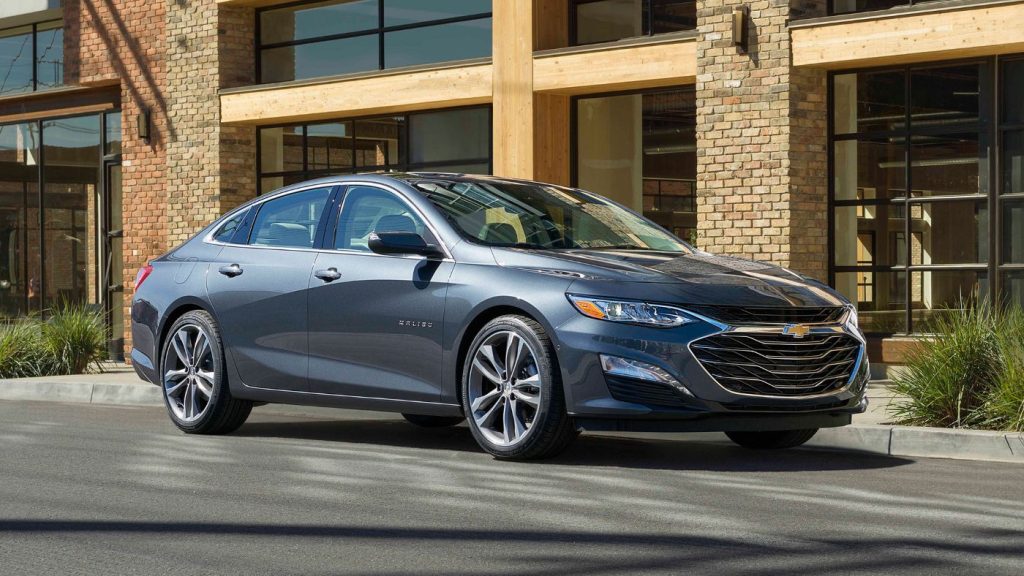
Under the hood, the Malibu is powered by either a 169-horsepower inline-four or a more potent 252-horsepower V6, giving it a respectable range of performance options to suit different drivers. Visually, the Malibu has undergone a transformation that makes it appear more like a premium sedan than something you’d find in a rental lot.
Its styling is clean and sophisticated, marked by tight panel fitment and subtle chrome accents that lend it an upscale presence. The front end may draw some mixed reactions due to its bold design, but it undeniably gives the Malibu character. Inside, the cabin has also taken a big leap forward.
Gone is the hard, uninspiring plastic of earlier models. In its place are higher-quality materials, a modernized dashboard, and a level of fit and finish that shows genuine effort—though a few cost-cutting elements still sneak in here and there, making some parts of the interior feel like a hit or miss.
One letdown is the absence of a traditional navigation system; while OnStar’s “Turn-by-Turn” navigation feature is helpful, it doesn’t quite replace the convenience of a built-in nav unit.
In sum, the 2008 Chevrolet Malibu has earned its “Most Improved” badge. While it still faces fierce competition from stalwarts like the redesigned Honda Accord, the dynamic Ford Fusion, the sporty Nissan Altima, and the ever-popular Toyota Camry, this Malibu is no longer warming the bench. It’s back on the court—fighting for rebounds, sinking three-pointers, and finally making a case for itself among the segment’s top players.
3. Ford Crown Victoria
If you’re talking about sedans that just refuse to die, the Ford Crown Victoria is in a league of its own. Once the go-to for police fleets and taxi companies, the Crown Vic’s body-on-frame design, durable V8 engine, and basic-but-bulletproof construction made it legendary.
These cars racked up miles like no other, often passing 300,000 miles in fleet service before being sold into the hands of budget-conscious drivers who’d keep them running even longer. It may not be luxurious, but it’s one of the toughest sedans ever made in America.
he flagship of Ford’s lineup, the grand dame Crown Victoria, underwent a redesign in 1998 that brought with it a host of improvements, including sharper steering and handling, a more formal roofline, a bolder grille, a new hood, and revised rear styling. As a result of these recent updates, the 2000 model doesn’t see many changes.
However, it does receive a number of safety enhancements that Ford implemented across its lineup for the 2000 model year. One such addition is the emergency trunk release—referred to, perhaps a bit tongue-in-cheek, as the “mobster” release—which allows a person trapped in the trunk to open it from the inside.
Another is the inclusion of child seat anchor brackets in the rear seats, offering parents and caregivers a better method to secure child safety seats. This system uses tethers that attach to the anchor brackets, providing added stability beyond what traditional seatbelts alone can offer.
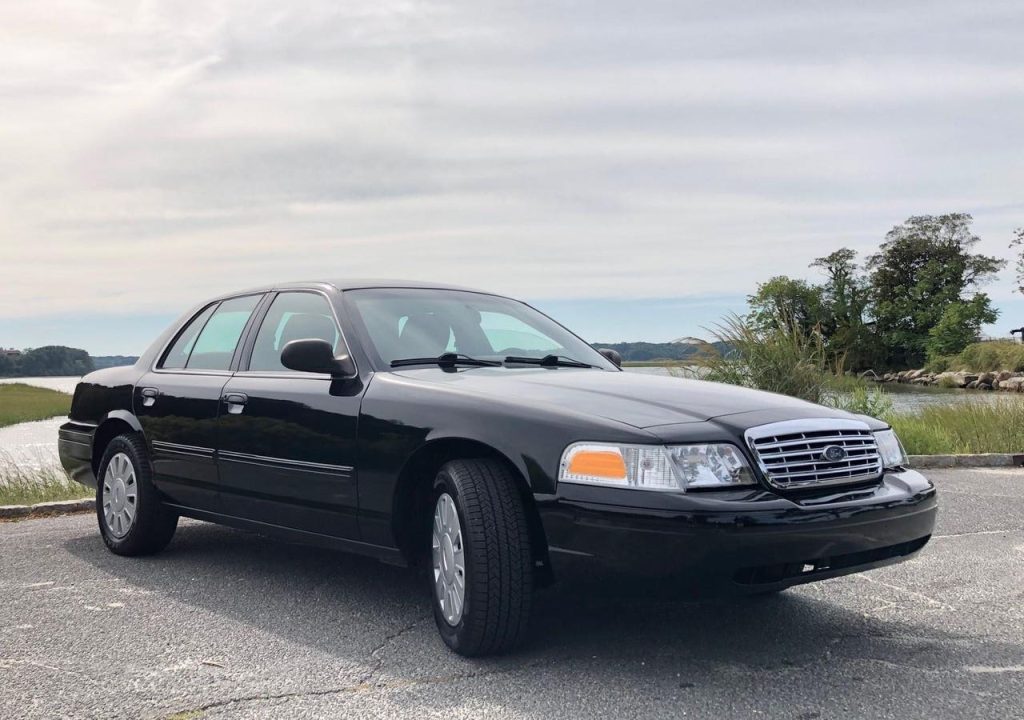
In today’s market, the Ford Crown Victoria and its Mercury Grand Marquis sibling represent serious value compared to many compact and midsize sedans on the lot.
Consider this: a fully loaded Crown Victoria, complete with power everything and a leather interior, comes in at just over $26,000. In contrast, a similarly equipped Toyota Avalon starts north of $30,000, and even the smaller Toyota Camry XLE comes in at around $25,000—despite offering only a modest V6, tighter interior space, and a noticeably smaller trunk.
In its standard configuration, the Crown Victoria drives much like you’d expect a large American sedan to—plush and comfortable, though prone to floating a bit over bumps. For drivers looking for more composure on winding roads, the optional Handling and Performance Package is worth considering.
It adds a few extra horsepower and significantly improves stability in corners, making it a solid choice for those who prefer scenic backroad drives over long, monotonous stretches of interstate. Thanks to a Watt’s Linkage rear suspension, the car’s rear axle rigidity is boosted by 400 percent, which translates to a clear improvement in handling.
Additionally, larger brake rotors paired with dual-piston calipers enhance braking performance, helping the car decelerate from high speeds without overheating. The traction control system also works at all speeds, utilizing the antilock brakes and spark retardation to prevent rear-wheel slip.
4. Chrysler 300 (2005–2010)
Before it got blinged out, the early Chrysler 300s with the 5.7-liter HEMI V8 or even the base V6s were solid machines. Built on a modified Mercedes E-Class platform, the 300 brought rear-wheel-drive American muscle to the sedan world with a touch of European engineering.
These cars have proven impressively durable, especially the V8 versions, which can easily top 200,000 miles with regular care. Add to that their road presence and comfort, and you’ve got a long-haul American classic.
The 2007 Chrysler 300 4dr Sdn 300 RWD came to market with a starting price of $25,120 and fell under the EPA’s “Large” classification. This rear-wheel-drive sedan was powered by a gas-fed V6 engine identified by the order code EER.
Displacing 2.7 liters (or 165 cubic inches), this Multi-Point Injection (MPI) engine generated a maximum output of 190 horsepower at 6400 rpm and 190 lb-ft of torque at 4000 rpm.
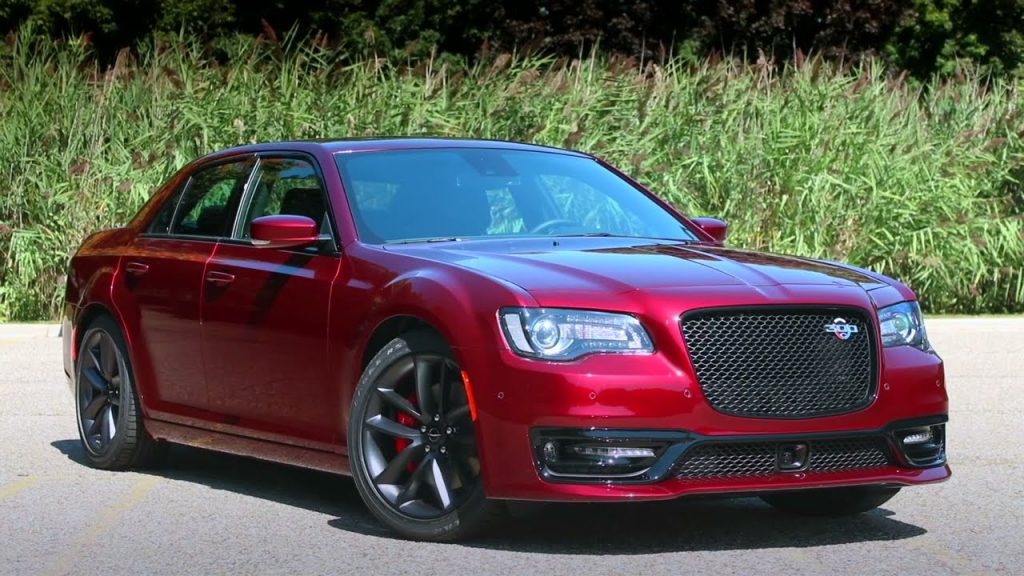
Although the cooling system capacity was not specified, the 300 came mated to a four-speed automatic transmission (order code DGV). Gear ratios for each transmission speed were not provided, nor were details on the reverse gear ratio or clutch size. However, the final drive axle ratio was listed as 3.90.
Environmental data such as the EPA Greenhouse Gas Score and estimated CO₂ emissions over 15,000 miles annually were not available. For fuel economy, the EPA did not provide a combined rating, but the city and highway estimates stood at 21 and 28 miles per gallon, respectively.
The calculated driving range for the city was approximately 378 miles, while the highway range reached up to 504 miles, thanks to its 18.0-gallon fuel tank. No auxiliary fuel tank capacity was noted. Also absent were EPA Fuel Economy Equivalent (MPGe) ratings, as this model was neither a hybrid nor an electric vehicle.
The 2007 Chrysler 300 RWD trim offered a solid balance of performance and efficiency for its time, especially for buyers seeking a full-size American sedan with rear-wheel-drive dynamics and traditional V6 power.
Also Read: 5 Sedans With Best Bluetooth-Pairing Success and 5 That Drop Connections
5. Buick LaCrosse (2010–2016)
Quiet, understated, and relentlessly reliable, the Buick LaCrosse doesn’t often make headlines—but it should when it comes to longevity. Built in the U.S. and aimed at comfort-focused drivers, the LaCrosse excelled at delivering a smooth ride and dependable service.
Its V6 engine, six-speed automatic transmission, and high-quality interior materials have made it a sleeper hit on the used market, where many buyers are surprised to see these cars still going strong well past 200,000 miles.
The 2010 Buick LaCrosse emerges completely transformed—redesigned, reimagined, and revitalized. Gone are the rounded design elements and bloated profile of the previous generation. In their place is a sharper, more defined exterior that exudes modern sophistication.
The interior has also seen a remarkable overhaul, offering a contemporary, upscale look that stands out in its class. While the new LaCrosse remains nearly identical in size to its predecessor—aside from a slight increase in height—the bold new body panels give it a significantly more substantial and commanding presence.
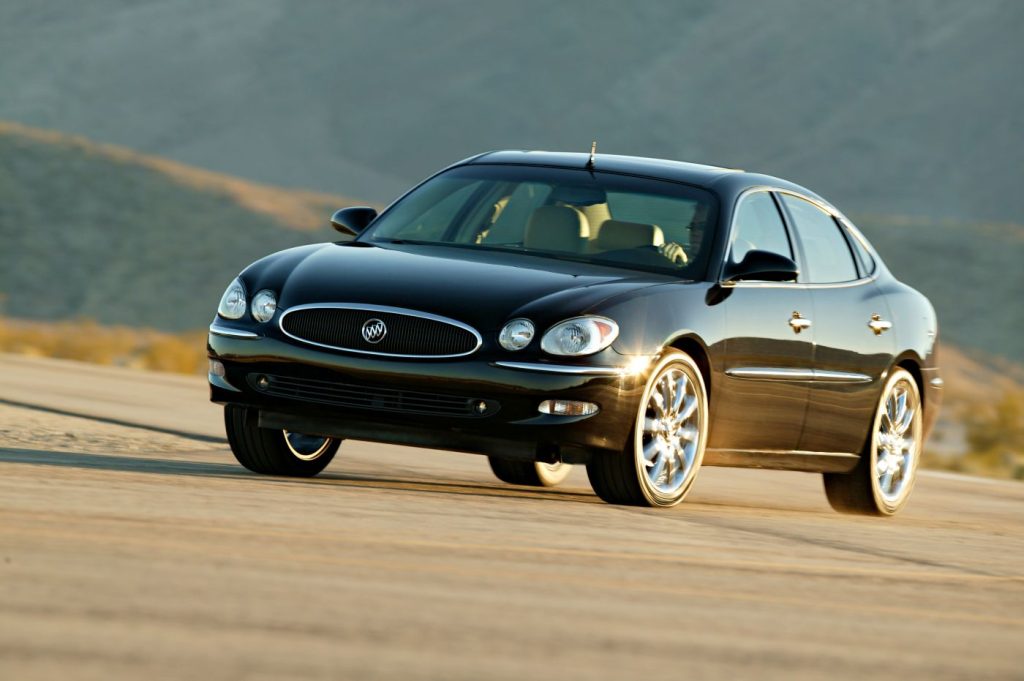
Even its driving dynamics have seen improvement, making it one of the more satisfying surprises from General Motors in recent years, especially considering the muted rollout that accompanied its launch.
Beyond just a cosmetic overhaul, the latest LaCrosse addresses many of the shortcomings of the outgoing model. Handling has been notably refined, making it unexpectedly engaging to drive.
The newly introduced mid-tier 3.0-liter V6 is a clear improvement over the outdated 3.8-liter pushrod engine, delivering smoother and more satisfying performance. In addition to the 3.0-liter V6, Buick offers a base four-cylinder engine—which feels slightly underpowered given the LaCrosse’s size—and a more robust 3.6-liter V6 at the top end.
Inside, the front seats provide comfort, space, and strong support, while the rear cabin now offers considerably more legroom. The overall interior experience is elevated, with premium materials and refined design touches that convey genuine luxury.
5 Sedans That Didn’t Last a Lease
These sedans earned reputations for being unreliable, frustrating, and in some cases, flat-out forgettable. Drivers didn’t just walk away—they ran, often before the lease was even up.
Here are five sedans that failed to live up to the promise, struggling to last even a few years on the road.
1. Chrysler Sebring (2001–2010)
The Chrysler Sebring was supposed to be an affordable, stylish midsize sedan, but instead, it became a punchline. Known for cheap materials, underwhelming performance, and nagging mechanical issues, the Sebring rarely made it past its warranty period without complaints.
Interior panels peeled, engines failed early, and resale value plummeted. If you got one as a rental, you were counting the minutes until drop-off. It’s no surprise that these are hard to find on the road today—and that’s not just because they sold poorly.
Chrysler launched the 2007 Sebring with ambitions of taking the mid-size sedan segment by storm across North America, Europe, and Asia. However, the onset of the global financial crisis derailed the automaker’s aspirations, preventing the Sebring from reaching the success it had hoped for.
Drawing inspiration from the vintage Vaillant—penned by none other than Virgil Exner—and borrowing design cues from the 2003 Chrysler Airflite concept, the 2007 Sebring was constructed on a new front-wheel-drive architecture shared with the Dodge Avenger.
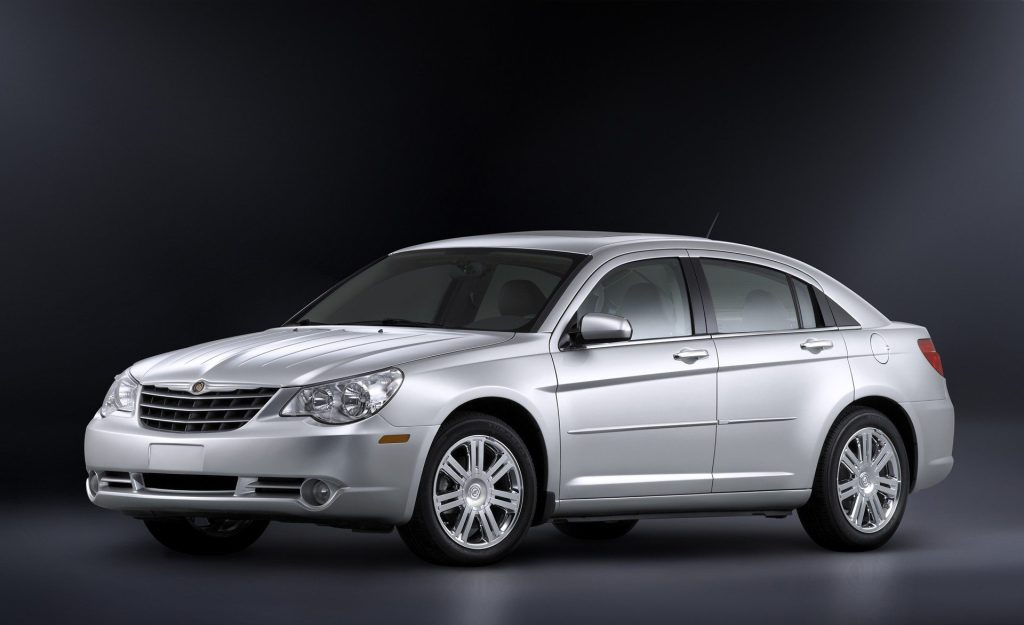
Despite these ambitions, the Sebring failed to resonate with American buyers and sold fewer than 250,000 units in five years, ultimately leading Chrysler to discontinue the model.
Design-wise, the Sebring borrowed heavily from the Chrysler Crossfire, especially in the front end. It featured a prominent quad-headlamp arrangement flanking a bold, chrome-accented grille. Its hood was sculpted with deep channels, converging toward the eye-catching Chrysler winged emblem.
Along the sides, the ascending creases in the door panels mimicked the brand’s sporty coupe styling, while at the rear, wide taillights stretched across the quarter panels and into the trunk lid—though they appeared more subdued compared to the aggressive styling up front.
2. Dodge Dart (2013–2016)
The Dodge Dart was FCA’s attempt to make a comeback in the compact sedan market, but the result was a confused, unpolished car that never found its footing.
From awkward styling to drivetrain choices that lacked refinement, the Dart was compromised from the start. Reliability was spotty, and performance was forgettable. It didn’t help that the compact sedan market was already hyper-competitive. Sales tanked, and it was discontinued in just a few years—failing to last even one full product generation.
It’s only appropriate that our first experience behind the wheel of the 2013 Dodge Dart happened in Austin, Texas. This rapidly evolving city reflects a different, more progressive side of the Lone Star State—one that leans more toward tie-dye shirts than ten-gallon hats, and more toward sleek downtown condos than sprawling ranch houses.
In much the same way, the Dodge Dart represents a fresh direction for the brand. This small, front-wheel-drive sedan is rooted in Italian engineering, a notable departure from the muscle-bound, V8-powered Chargers and Challengers that have long defined Dodge.
Even so, the Dart manages to preserve enough of the Dodge DNA to blend in with its larger siblings while standing apart in the ultra-competitive compact car market.
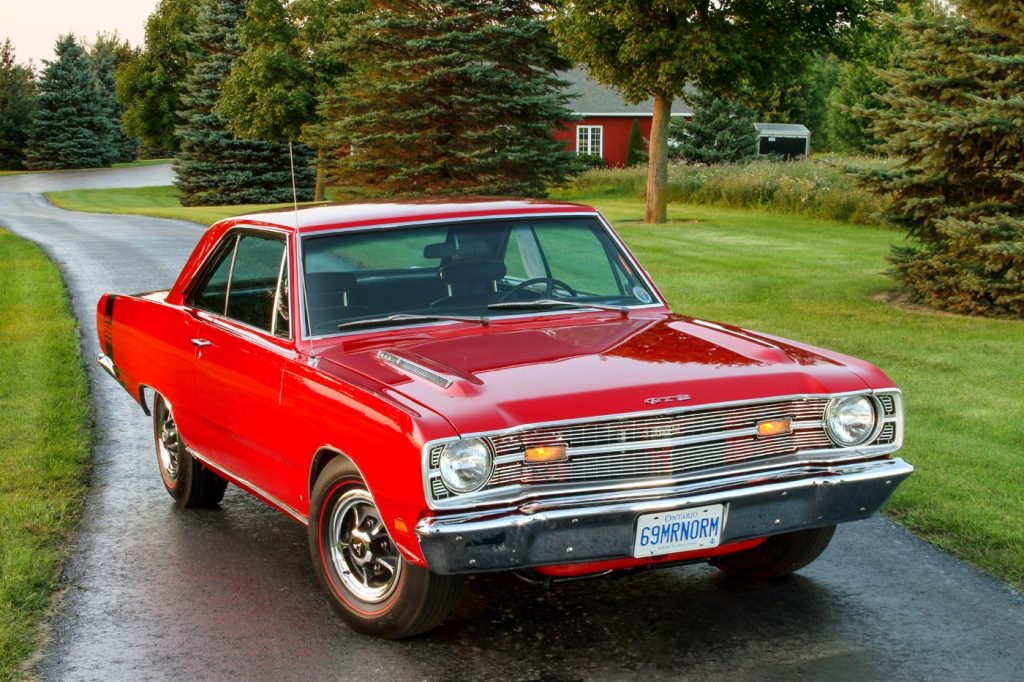
At the heart of the Dart is a chassis, suspension, and steering system inherited from the European-market Alfa Romeo Giulietta. That setup gives it a surprising level of agility and engagement—more about hugging corners than smoking tires, but enjoyable nonetheless.
Under the hood, the optional 1.4-liter turbocharged four-cylinder engine, also sourced from Alfa Romeo, delivers 160 horsepower and 184 pound-feet of torque. This setup helps the Dart, despite its relatively hefty curb weight, achieve one of the segment’s quickest 0-60 mph times.
Still, the 2013 Dodge Dart is far more than just a rebadged Giulietta with a trunk and a Dodge crosshair grille. In nearly every measurement, it surpasses its Italian cousin in size—most notably, with a full extra foot in overall length.
More significantly, it ranks as one of the largest compact sedans available, even edging out the Volkswagen Jetta in several key dimensions. Its extra width, in particular, translates into more interior room and gives the car a sense of heft and presence uncommon in this class. It genuinely doesn’t feel like a compact car when you’re driving it.
3. Chevrolet Cruze (2011–2019)
The Cruze had potential—it looked modern, drove decently, and was available with a diesel option. But beneath the surface, early models were plagued by water pump failures, transmission issues, and engine troubles. The Cruze’s timing chain issues, coolant leaks, and spotty electronics dragged down its reputation.
Many owners found themselves with costly repairs before reaching 100,000 miles. Though later models improved slightly, the Cruze never fully shook its reliability stigma, making it a risky bet in the long run.
Every 2014 Chevrolet Cruze comes equipped with front-wheel drive. The base Cruze LS features a 1.8-liter four-cylinder engine producing 138 horsepower and 125 pound-feet of torque.
Meanwhile, the LT, LTZ, and Eco trims are powered by a turbocharged 1.4-liter four-cylinder that delivers the same 138 horsepower but increases torque to 148 lb-ft. For those seeking diesel power, the Cruze diesel variant comes with a turbocharged 2.0-liter four-cylinder engine rated at 151 horsepower and 264 pound-feet of torque.
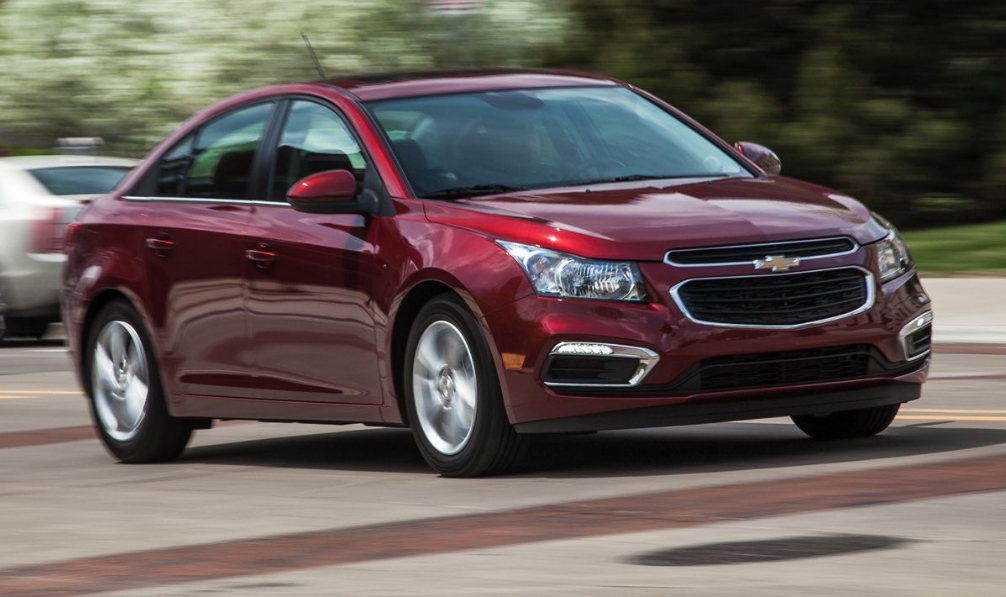
A six-speed manual transmission is standard for the LS, LT, and Eco models, while a six-speed automatic is available as an option. The LTZ and diesel models, on the other hand, come standard with the automatic transmission.
According to Edmunds testing, a Cruze equipped with the turbocharged 1.4-liter engine and automatic transmission completed the 0-to-60 mph sprint in 9.2 seconds, which is slightly slower than average for its class. The diesel variant performed better, achieving the same acceleration in 8.6 seconds—matching the time of the Volkswagen Jetta TDI automatic.
In terms of fuel efficiency, the Cruze diesel performs admirably with EPA ratings of 33 mpg combined (27 mpg city / 46 mpg highway). While these figures are impressive, the Jetta TDI still edges it out slightly with a 34 mpg combined EPA estimate.
4. Lincoln MKZ (2013–2020)
The Lincoln MKZ had bold styling and a promising feature set, but its reliability was uneven at best. Shared with the Ford Fusion, the MKZ tried to be a premium experience on a budget, and in doing so, it introduced a number of finicky features—like an unintuitive push-button shifter and clunky infotainment—that didn’t age well.
Mechanical gremlins like transmission hesitation and electrical glitches surfaced early in many models, making them a tough sell on the used market. Most drivers who picked luxury alternatives never looked back.
We appreciate that the MKZ includes a generous list of standard features and, importantly within this segment, starts at a price point lower than many of its competitors.
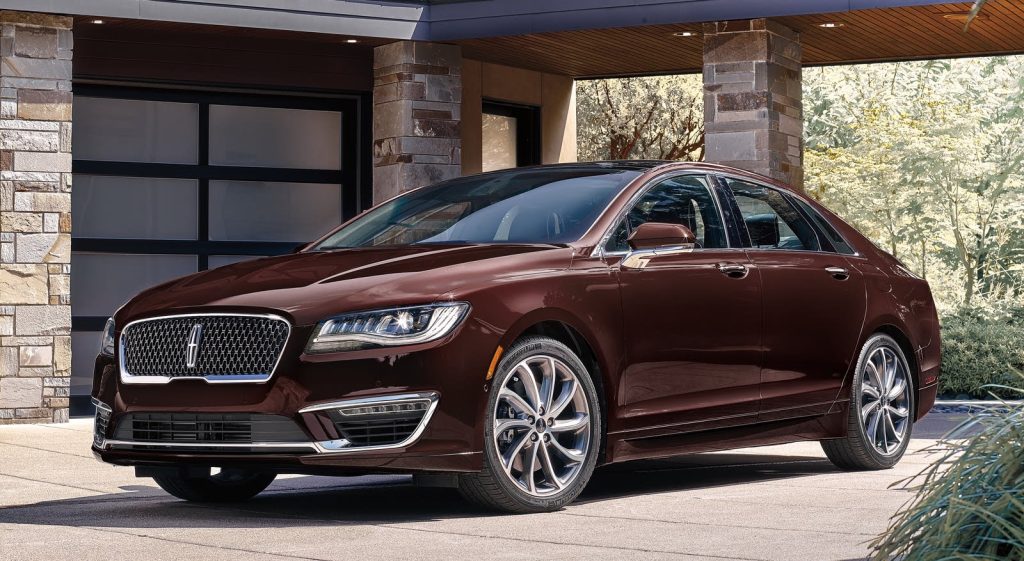
While some automakers have reduced the variety of trims and powertrains to cut costs, Lincoln continues to offer several configurations—similar to what many German brands still provide—to cater to a broad range of customer preferences.
That said, there are a few drawbacks to consider. The MKZ falls short in terms of interior space compared to others in its class, and certain cabin materials don’t quite meet expectations for quality.
In addition, the standard four-cylinder engine feels a bit lackluster when it comes to acceleration. Still, the MKZ holds its own against similarly priced rivals such as the Acura TLX, Audi A4, Cadillac CT5, and Lexus ES 350.
5. Pontiac G6 (2005–2010)
The Pontiac G6 was part of GM’s push to modernize the brand before its collapse, but it never delivered the reliability needed to build trust. Its engines were average, its interiors were forgettable, and its electrical system became a recurring issue.
Transmission failures, power steering malfunctions, and dashboard warning light parades were all too common. By the time Pontiac was shut down in 2010, the G6 had already worn out its welcome, and most surviving models now linger in junkyards or sketchy Craigslist listings.
Originally introduced in coupe form in 1973, the Grand Am has carried out Pontiac’s midsize sedan duties since the mid-1980s. The most recent Grand Am has roots dating back to 1985, when Pontiac introduced its front-drive “European-inspired” version.
Time has not been kind to the Grand Am, as subsequent redesigns in the 1990s did little to bring the car up to class standards. Pontiac knew it needed a competitive replacement, and none too soon.
The short answer was to simply make a great Pontiac sedan based on GM’s latest-and-greatest midsize platform, the Epsilon architecture. It’s taken awhile, but it looks like GM has finally gotten this platform-sharing thing down. We’ve never been opposed to the idea per se, but in too many instances in the past, cars that shared platforms were just too similar for our tastes.
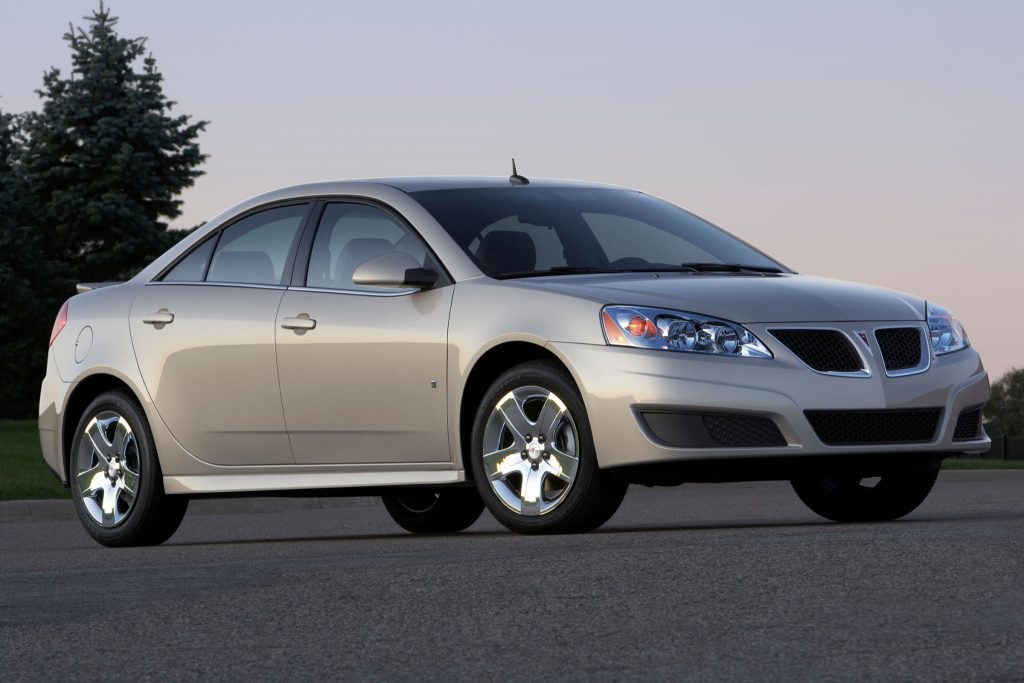
The G6 is the third production car to utilize General Motors’ Epsilon platform but it wouldn’t be overstating it to say most new car buyers will never see the family resemblance. If it seems like the G6 looks a little bigger than its stablemate, the Chevrolet Malibu, that’s because the Pontiac uses the lengthened version of the Epsilon platform like the Malibu Maxx.
This long-wheelbase platform provides two main benefits — more rear-seat room and better handling. The extra length makes for truly big-car backseat space, and passengers will enjoy plenty of legroom. The long wheelbase also helps the G6 deliver a smooth and stable ride.
As with most Pontiacs, the G6 is heavy on style — only this time around the styling is bold without being tacky. The car stands out but does not look garish and, thankfully, the plastic cladding of Pontiacs past has been ditched in favor of clean, simple lines.
The G6 offers just enough muscle to back up the sporty looks. The G6 is powered by GM’s tried-and-true 3.5-liter V6, good for 200 horsepower. Pontiac is trying to keep (or rebuild) its performance car customer base by offering a shift-it-yourself automatic that will hit redline without upshifting — in other words, true manual control.
Whether you’re after a rock-solid daily driver or a used sedan that won’t nickel-and-dime you to death, knowing which models go the distance—and which don’t—is critical. American automakers have built some truly enduring cars, but they’ve also missed the mark more than a few times. The good news? The long-haulers still exist—you just have to know where to look.

